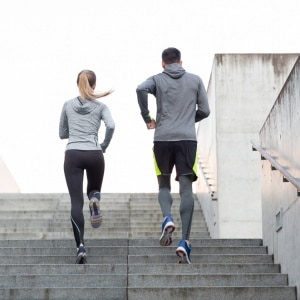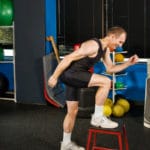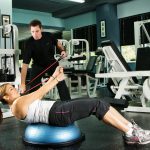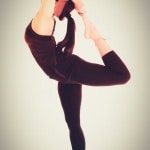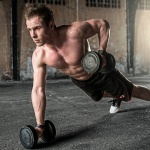
December 2018
Training the Respiratory-side of Cardiorespiratory Health
Not a day goes by without some mention on the news, or at your doctor’s office, of your cardiovascular health. Blood pressure, cholesterol, disease-risk, etc. But, unless you’ve had problems with the lungs, few of us consider the respiratory side of the formula.
In exercise science, we were taught that the lungs were not primary components to aerobic fitness. Defined as the maximal volume of oxygen one can pump and use through the system, aerobic fitness is a function of heart and vascular health plus the muscles’ ability to use the O2 that’s delivered. Lungs aren’t the issue.
Over the past 20 years, more emphasis has been directed at the possibility of conditioning not the lungs but the breathing mechanisms themselves. Based on the idea that respiratory fatigue is produced during long bouts of vigorous activity, respiratory muscle training (RMT) has come into favor as a way of preparing the muscles that move air in and out of the lungs to withstand the rigors of exercise.
Until the past decade, it was considered only feasible and useful for those with a respiratory condition. Now, a meta-analysis of the studies on RMT has demonstrated that the muscles of breathing – the diaphragm, some neck and chest muscles – can increase their resistance to fatigue, improving muscle economy which preserves energy for the actual physical work of activity; alter ‘motor recruitment patterns’ to improve ‘ventilatory efficiency’; and modulate the pro- and anti-inflammatory milieu, all of which “support the ergogenic effect” of RMT, at least for longer-duration activity. For sprints and short-duration exercise, the jury is still out.
JSCR Sept. 2018
Why We Humans Don’t Wanna Exercise
Why is it some – very few – of us love to put on our exercise gear and head out to the gym, park or streets to work out, while most – like 75-80% – don’t? This is a question often discussed in STEPS Fitness newsletters and blogs such as this, this, this and this. This is the question some post-doctoral exercise science researchers in Europe asked. They used electroencephalography to observe directly what the human brain is doing when shown scenes of physical activity and sedentary behavior. They studied 29 young adults who were recreationally active or were sedentary but planning to become more active. Their mission: move their avatars on the computer toward active pursuits and away from sedentary ones.
Interestingly, both active and sedentary subjects had faster cortical reactions to scenes of physical activity than to scenes of sedentary ones, but the active participants had faster reactions than the sedentary ones. The lead author noted that “[the brain is] minimizing energy costs. This minimization was useful during evolution because it provided us an advantage for survival.” Thus, it took more brain energy to get going even if you really wanted to. They concluded that avoiding sedentary behaviors was associated with high levels of conflict monitoring and inhibition”, and that additional brain resources were required to “escape a general reaction toward sedentary behaviors.”
Neuropsychologia Oct. 2018, Washington Post 9/21/18
Tid Bits
A study of 1,361 subjects in the Framingham Offspring Cohort, reported in the Journal of Bone and Mineral Research, showed that those who lost 5% of their body weight from dieting over the past 4-5 years also reduced bone density. It’s recommended that, if you’ve lost or are trying to lose weight, you do resistance training, especially weight bearing exercise. UC- Berkeley Wellness Letter 11/18
Why do post-menopausal women gain weight around the middle? Of the many metabolic reasons, one is that the reduction in physical activity is related to reduced estrogen. Sixty-one pre-menopausal women were temporarily induced into menopause for 5 months. Half were given estradiol, half a placebo; some in each group were put on a resistance training program. The estradiol group tended to be more active outside the programmed training sessions, suggesting that reduced estrogen reduced activity. MSSE August 2018
Another Journal of Bone and Mineral Research study found that kids who continued in sports participation developed and maintained higher bone density at the age of 20. The Australian study followed 984 children into young adulthood. Male ‘consistent sport participators’ from ages 5-17 years had greater whole body and leg bone mineral content at age 20 than drop-outs while those who ‘joined sports’ later had higher leg bone mineral content than those who stopped doing sports. Female sport participators also had greater leg bone mineral density at 20 years of age than females who dropped out. Health Canal 10/18/18

